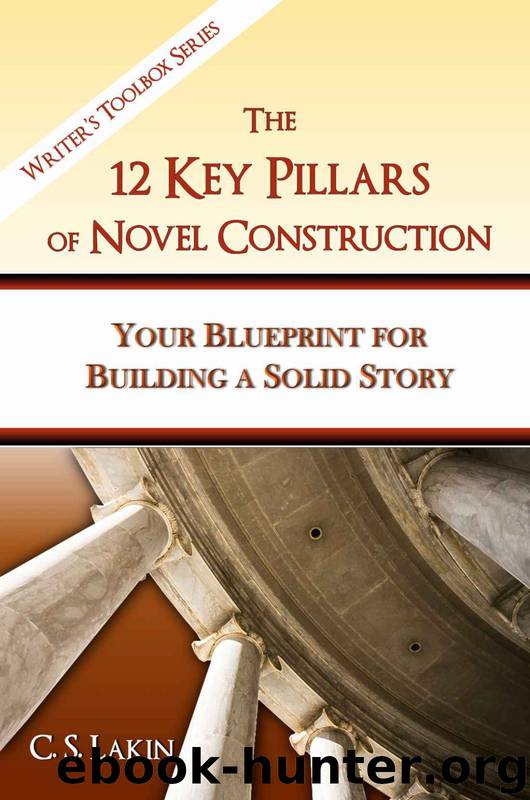12 key pillars of novel construction by lakin c s

Author:lakin, c s [lakin, c s]
Language: eng
Format: epub
Publisher: Ubiquitous Press
Published: 2015-02-28T23:00:00+00:00
The Nemesis
I’m going to start with what might be considered the easiest or most obvious of secondary character types, but instead of thinking of a stereotyped “bad guy,” which not all novels have or should have, think more in terms of anyone who stands in the way of the hero reaching his goal.
This means even an ally or friend—someone who thinks she has the hero’s best interests at heart—can be a nemesis. Some call such a character an antagonist. I like that term because it reminds me of antagonize (for obvious reasons). Anyone who antagonizes or causes “agony” to your character can be an antagonist.
One character might wholly be opposed to your hero the whole novel through. Another might start off as an ally and switch camps, which is a very common plot structure. But a character that is in actuality an ally or friend would not be considered a “nemesis.”
We all have moments in which we disagree with someone we love, or fight with them. Doesn’t mean we’re their enemy or opponent at heart. Likewise, an antagonist may not even realize she is one, but the reader does, and her role in the story makes her one. Needless to say, most antagonists in real life—and, one hopes, in novels too—really believe they are doing what’s right and even best for the protagonist (however misguided we may feel she is).
An antagonist could be a real evil, mean character, or she could be an overly sweet and well-meaning elderly neighbor. There is no typical “face” for a nemesis. If you keep in mind the definition of this type of character—that she is in the story to stand in the way of the hero reaching his goal—you will see the potential for lots of different “faces” in your novel. There are few things worse in our lives than “well-meaning friends” who really want to . . . persuade us in a different direction. There’s that word again—persuade.
If you think in terms of the antagonist hoping, trying, or wishing to persuade your hero away from the direction he is going in, you have an antagonist.
Download
This site does not store any files on its server. We only index and link to content provided by other sites. Please contact the content providers to delete copyright contents if any and email us, we'll remove relevant links or contents immediately.
Asking the Right Questions: A Guide to Critical Thinking by M. Neil Browne & Stuart M. Keeley(5649)
Autoboyography by Christina Lauren(5184)
Eat That Frog! by Brian Tracy(4436)
Dialogue by Robert McKee(4323)
Sticky Fingers by Joe Hagan(4103)
Journeys Out of the Body by Robert Monroe(3572)
Annapurna by Maurice Herzog(3424)
Full Circle by Michael Palin(3389)
Schaum's Quick Guide to Writing Great Short Stories by Margaret Lucke(3321)
Elements of Style 2017 by Richard De A'Morelli(3310)
The Art of Dramatic Writing: Its Basis in the Creative Interpretation of Human Motives by Egri Lajos(3017)
Atlas Obscura by Joshua Foer(2900)
The Diviners by Libba Bray(2887)
Why I Write by George Orwell(2877)
In Patagonia by Bruce Chatwin(2876)
The Fight by Norman Mailer(2848)
The Mental Game of Writing: How to Overcome Obstacles, Stay Creative and Productive, and Free Your Mind for Success by James Scott Bell(2845)
Venice by Jan Morris(2526)
The Elements of Style by William Strunk and E. B. White(2442)
